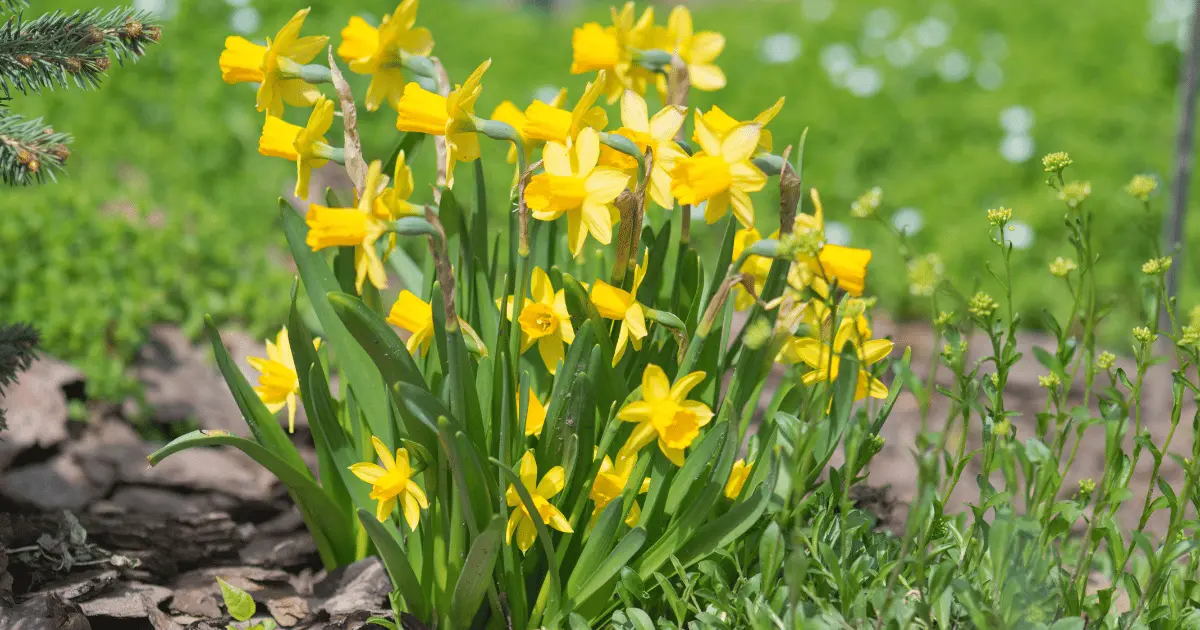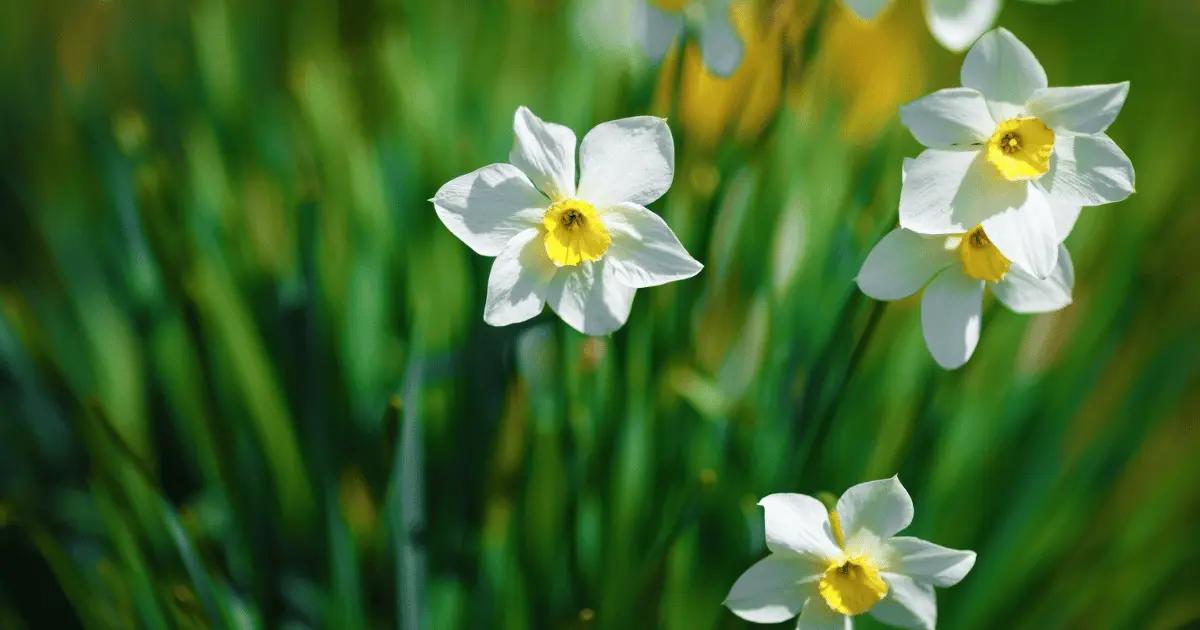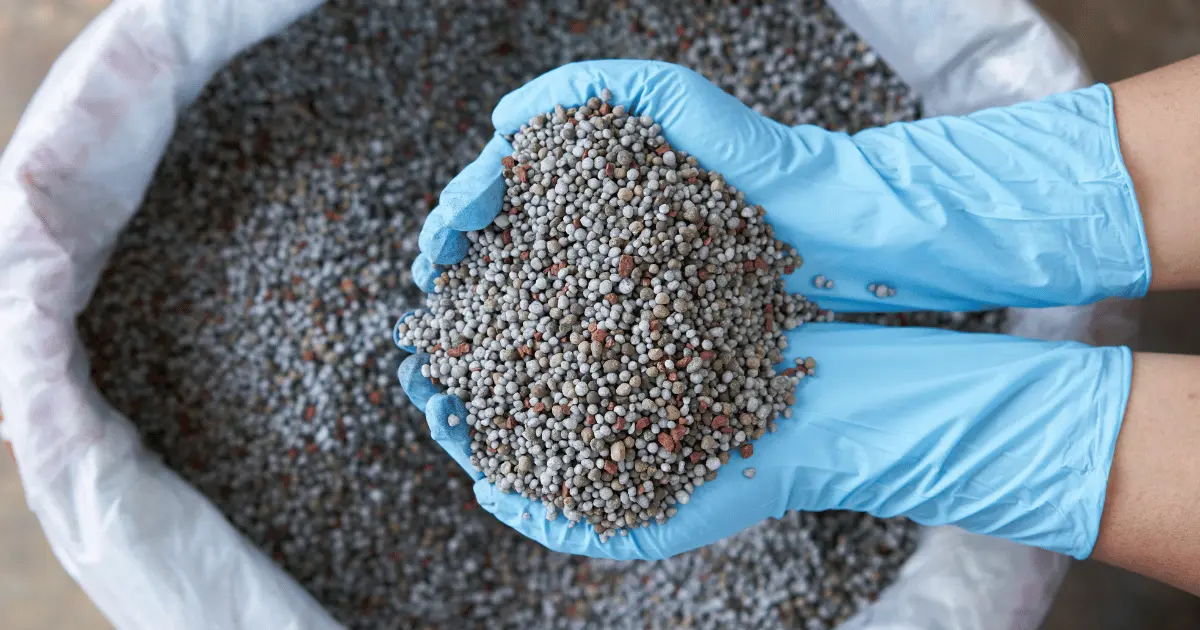The arrival of spring heralds the coming of warm weather. Do you know what announces the arrival of spring? If you thought of daffodils, you are correct.
The daffodil bloom is a stunning one. It is like a bright gift that warms the heart just as it gets lonely and cold.
The sunny yellow blooms are often the focal point of a cold and barren landscape left after winter. Daffodils are treasured not only for their beauty but also for their lovely fragrance.
A carefully chosen selection of daffodils might be just what you need to keep your garden beautiful for most of the first half of the year.
How Many Months After Planting do Daffodils Bloom?

Daffodils grown from bulbs take a shorter amount of time to bloom than those grown from seeds.
It will take about five or six weeks for roots to start showing at the bottom of the bulb, followed by leaves and shoots at the top.
Overall, it will take 12 to 15 weeks for the bulb to flower, while they wait for blooms from a daffodil grown from seeds for five or six years.
When do Daffodils Bloom?
Truly, it depends on the plant. Different daffodils emerge and bloom at different times in the spring or earlier.
The time your daffodil blooms depends on the variety you’ve planted. Daffodils Bloom in late winter, and early, mid, and late spring.
The early variety will bloom as the winter fades away, giving way to spring. In slightly warmer zones, daffodils can bloom as early as February.
Then, there are the mid-season varieties. These begin to bloom in March in warmer regions and in April in slightly colder places.
Finally, you have the late-blooming varieties. These may bloom as late as late May in cold areas and a bit earlier in places with more warmth.
How Long do Daffodil Blooms Last?

Each plant sends out flowers only once a year, and the blooms last six to ten weeks.
However, some cultivars can bloom for up to six months, depending on where you live and if the conditions are met.
How to Care for a Blooming Daffodil
Daffodils are pretty much self-sufficient. They need little more than watering during the active season and topdressing with bulb fertilizer if the bulbs are not flowering enough.
Your daffodil will bloom best when kept in the full sun, although it can withstand partial shade or a bit of dappled light.
Water your plants regularly, especially now that it is highly active. Do not, however, allow the plant to sit in waterlogged soil.
Supply your daffodil with enough water to moisten the soil, not drowning the plant. If not, the bulbs will rot.
If your daffodil isn’t blooming as it should, sprinkle some bulb food or bone meal and water it well into the soil.
How to Care for Daffodils After Blooming
Although daffodils are low maintenance and stress-free, a little after-blooming care can contribute hugely to the following year’s performance.
There are four main parts to daffodil after blooming care, and they are:
- Deadheading
- Pruning Foliage
- Fertilizing
- Dividing
The first three of the four listed above should be done every year. Dividing overgrown bulbs needs to be done every four to six years—more on all these below.
Deadheading
For bulb flowers, they’ll need to store the energy needed for blooming months before they’ll actually use it.
The dying and fading blooms continue to use up the plant’s resources as long as they are still on the plant. These resources are supposed to be stored for the next cycle.
Remove the daffodil blooms immediately after they fade. This way, you’ll help the plant save up enough power for next year’s flowers.
Remove only the stem and leaves. Do not touch the leaves.
Pruning Foliage
It is imperative not to remove the leaves too early. Even though the foliage is dying, it still feeds the bulb through photosynthesis.
As the foliage of a daffodil slowly fades at the end of the blooming cycle, it still feeds the bulb by capturing the sun’s rays and converting them to energy.
That energy is stored in the bulbs below and will be used for the next season’s growth and bloom cycle.
Removing the leaves earlier will result in weaker bulbs and less stored energy to bloom next year.
Allow all the foliage to die completely before pruning them to the ground for the best results.
Fertilizing

Fertilize your plant late in the season, in late fall. Use a well-balanced bulb fertilizer when plants can no longer grow.
Dividing
Dividing bulbs need to occur when either the foliage becomes too dense or the blooms begin to reduce in density over the years.
Division should take place in early fall. After this is done, the separate bulbs can be planted, and all you need to do is wait for more glorious flowers by next spring.
Lastly, keep the soil dry during the dormant months. Daffodils prefer to stay dry while they are resting.
Daffodil not Blooming, What Can be Done?
Daffodils are one of the most reassuring plants, rewarding one consistently with beautiful blooms…until they don’t.
What has gone wrong? Can you save your plant? What can you do so it doesn’t happen next time?
Well, there are several reasons why a daffodil will not bloom at all or with a reduced intensity than the previous years.
Maybe it was planted too late, the bulb was diseased or damaged, somewhere inhospitable, you pruned too early, or you over-fertilized.
For bulbs planted too late, carefully dig them up and plant them in a container filled with fresh potting mix.
Cover the bulbs but not enough to bury the tips, then water slowly until liquid flows out of the drainage holes.
Place the container somewhere in your home that always stays between 35 to 45 degrees Fahrenheit.
Water deeply every week, and keep them in that cool place until you notice yellow shoots emerge from the tip of the bulb.
Bring the container to an area with four to six hours of sunlight and temperatures between 50 to 60 degrees Fahrenheit.
You can transplant the bulbs into the ground when the shoots turn green.
If your bulbs have been infected, you should get rid of them and start afresh with healthy ones in a completely different part of your garden.
Or plant them in a container with fresh potting soil.
If you accidentally planted your daffodil in a place that receives no light or has poor soil, carefully transplants it to a sunnier, friendlier place.
Sometimes daffodils will not bloom if they’ve been given an inadequate amount of fertilizer or too much nitrogen.
Nitrogen promotes leafy growth but not many flowers. Give your daffodil a specialized fertilizer with a high phosphorus content.
Remember to divide the bulbs regularly to allow enough space for your daffodils to grow without competing over nutrients and resources.
